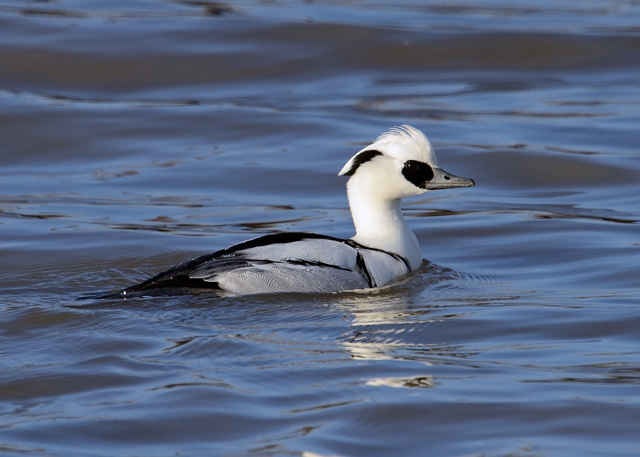Smew adapting well to climatic change
Smew — the scarce and striking winter visitor to the UK — is doing twice as well within areas protected by EU wildlife laws as they spread north-east across Europe in response to climate change, according to a new study.
Scientists studied data from wetlands throughout Europe and found that nearly a third of Smew now spend winter in north-eastern Europe, compared to just 6 per cent two decades ago. In that region, numbers of Smew within Special Protection Areas designated by the EU Birds Directive have grown twice as fast as those on unprotected sites. However the study found that in Latvia and Sweden, the protected area network supports fewer than one in five Smew and in Finland that proportion drops to just one in fifty.
WWT's Head of Species Monitoring, Richard Hearn, said: "The EU's network of protected areas is obviously helping Smew adapt to climate change, but in this newly occupied region there aren't enough of them and that could constrict the population as they spread north. Most Special Protection Areas were designated around 20 years ago using the data that we had then. Things have changed dramatically in the natural world since then and we need to respond to help ensure that Smew and other waterbirds remain well protected."
The National Organiser of the Wetland Bird Survey, Chas Holt of the British Trust for Ornithology, added: "The UK data that contributed to this study were collected by the dedicated volunteers of the UK's Wetland Bird Survey. The published results are an excellent example of how collaboration across a species' range can generate outputs that are of direct relevance to conservation."
The authors emphasise that protected areas still need to be maintained at the southern end of the birds' range, in western Europe, so that they have somewhere to retreat during particularly harsh winters, such as during December 2010. In the UK, a small population of Smew can be found in winter at favoured gravel pits and reservoirs in lowland England. This UK population has approximately halved since the late 1990s, and the species has been particularly scarce in the past couple of winters.
These results are based on data from the International Waterbird Census, coordinated by Wetlands International, from 16 countries since 1990 and the findings were published in the scientific journal Diversity and Distributions.


